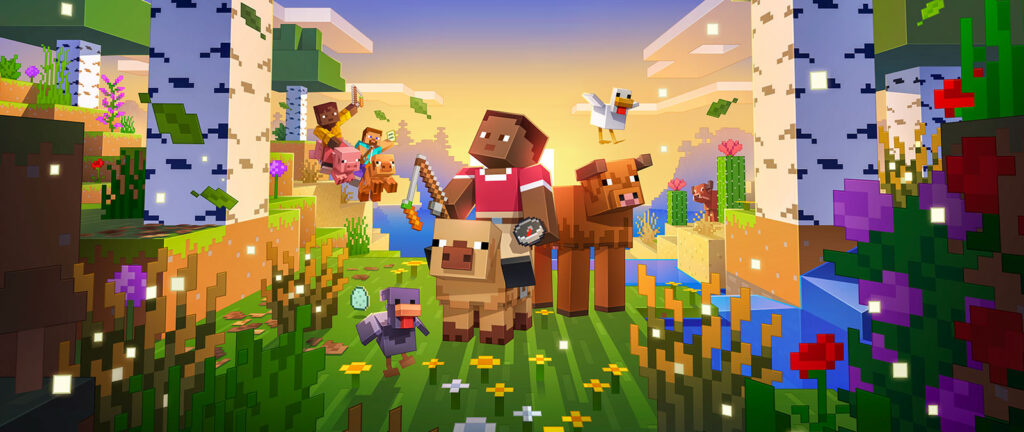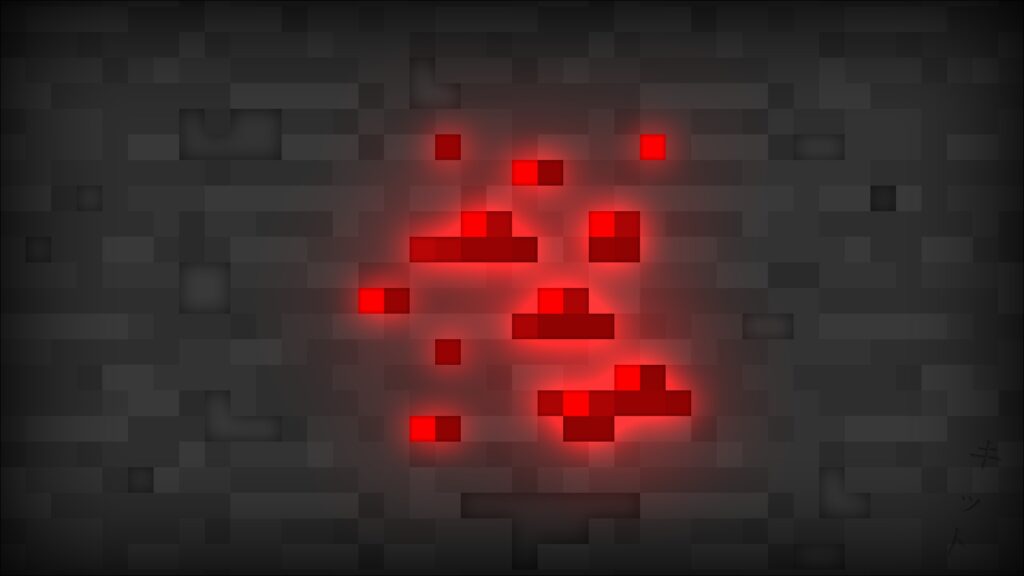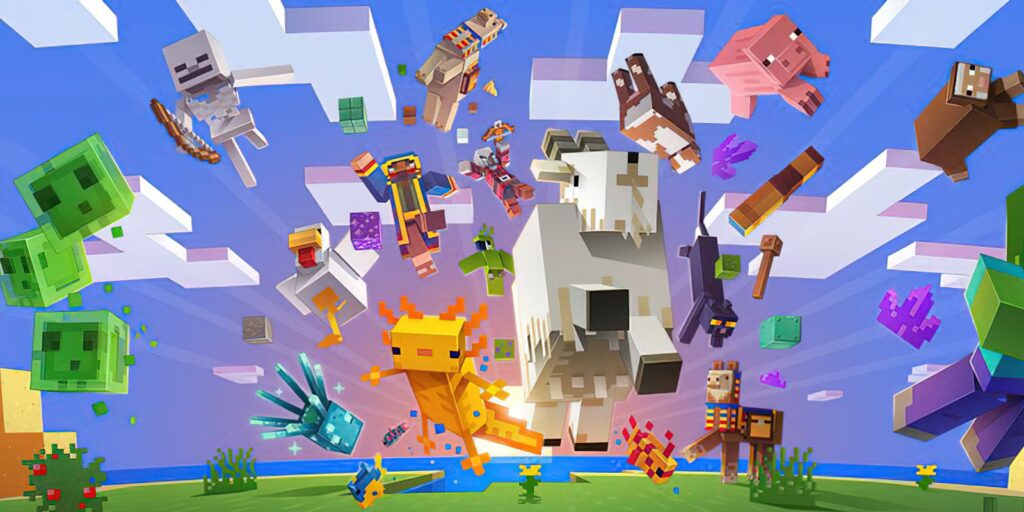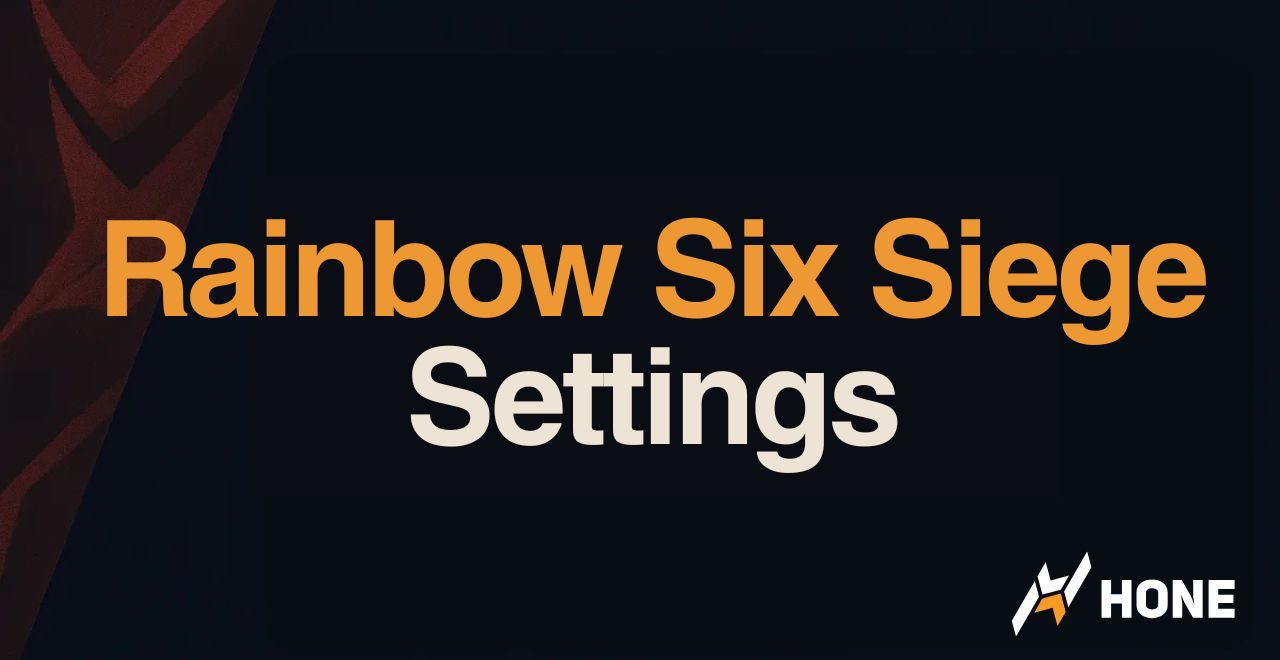Your Minecraft world is stuttering. Blocks reappear after mining, mobs teleport across the screen, and your carefully crafted redstone contraptions grind to a halt. Sound familiar? You’re experiencing the frustration that haunts millions of players: Minecraft lag.
We’re diving deep into why Minecraft is so laggy at its core, from the technical quirks of its tick-based engine to the specific versions that brought performance to its knees.
-
1Check F3 screen: If FPS is low, it’s client lag. If TPS is below 20, it’s server lagInstant
-
2Reduce render distance to 8-12 chunks+30-50% FPS
-
3Install Sodium (Fabric) or OptiFine for immediate performance boost+100-200% FPS
-
4Clear excess entities with /kill @e[type=item,distance=..100]+5-10 TPS
-
5Allocate proper RAM (4-8GB for vanilla, 6-12GB for modded)Prevents stutters
Types of Lag in Minecraft

Before diving into fixes, you need to identify which type of lag you’re experiencing. Minecraft has three distinct lag types, each with different causes and solutions. Treating the wrong type wastes time and leaves you frustrated.
🖼️ Client-Side Lag (FPS)
Visual stuttering and low frame rates on your computer
How to identify: Press F3 and look at the top left. If your FPS is below 30, you have client lag. The game looks choppy, controls feel sluggish, but blocks break normally.
Common symptoms:
- Stuttering when looking around
- Freezing when loading new chunks
- Low FPS near complex builds
- Game feels like a slideshow
Root causes:
- Insufficient hardware (GPU/CPU)
- Too many particles or entities being rendered
- High render distance settings
- Shaders or resource packs
- Background programs consuming resources
⏱️ Server-Side Lag (TPS)
The entire game world slows down for all players
How to identify: Type /tps on servers (requires permissions). Normal is 20 TPS. Below 19 causes noticeable lag, below 16 is severe. In single-player, check the F3 screen for “Server” ms/tick (should be under 50ms).
Common symptoms:
- Blocks reappear after breaking
- Mobs move in slow motion
- Water/lava flows slowly
- Eating food takes forever
- Chat messages delayed
- Redstone circuits run slowly
Root causes:
- Too many entities (mobs, items)
- Complex redstone contraptions
- Excessive chunk loading
- Large farms or mob grinders
- Corrupted chunks
- Insufficient server resources
🌐 Network Lag (Ping/Latency)
Delay between your actions and server response
How to identify: Press Tab to see your ping (ms). Good: under 50ms, Playable: 50-150ms, Poor: 150ms+. Actions feel delayed but game runs smoothly.
Common symptoms:
- Players teleporting/rubber-banding
- Hits not registering in PvP
- Delayed block placement
- Items taking time to pick up
- Chat messages arriving late
Root causes:
- Distance to server
- Poor internet connection
- Wi-Fi interference
- Server location/hosting quality
- ISP routing issues
# Check server performance /tps /timings on (wait 5 min) /timings paste # Entity count check /forge entity list /paper entity list # Clear ground items (emergency fix) /kill @e[type=item] # Check loaded chunks /forgeChunkLoading
Entity Lag
Entities are Minecraft’s biggest performance drain, more than packet loss. Every mob, dropped item, minecart, and item frame requires constant processing. When they accumulate, your game grinds to a halt.
🐑 Mob-Related Lag
Living entities overwhelming your CPU
The Problem: Each mob runs AI calculations 20 times per second. Pathfinding alone can consume massive resources, especially when mobs can’t reach their target.
Immediate Fixes:
- Set mob caps: Limit animals to 10-15 per pen
- Kill excess mobs:
/kill @e[type=cow,distance=..50,limit=30,sort=random] - Fix zombie AI loops: Ensure villagers are fully enclosed or 3+ blocks away
- Use mob switches: Fill the mob cap to prevent new spawns
- Name tag farms: Named mobs don’t despawn but still count toward caps
Long-term Solutions:
- Redesign farms: Use water streams to concentrate mobs in killing chambers
- Add activation rails: Keep minecarts with mobs stationary when not needed
- Install mob limiters: Plugins like MobLimiter or StackMob for servers
- Optimize villager setups: Minimize workstation scanning with proper placement
🖼️ Item Frame Lag (MC-1138)
A bug that’s plagued Minecraft for over 7 years
The Problem: Item frames cause severe FPS drops, especially with maps. Just 200 map-filled frames can crash servers.
| Item Frame Content | Performance Impact | Safe Limit |
|---|---|---|
| Regular Items | Medium | ~500 per area |
| Maps | Extreme | ~50 per area |
| Invisible Frames | Low-Medium | ~1000 per area |
Solutions:
- Replace with alternatives:
- Use signs for labeling
- Armor stands for displays
- Paintings for decoration
- Optimize placement:
- Never use maps in item frames for decoration
- Space frames at least 2 blocks apart
- Keep them out of spawn chunks
- Technical fixes:
- Install Entity Culling mod (hides unseen entities)
- Use texture packs with simplified item models
- Set entity distance to minimum in video settings
Since the 1.14 Village & Pillage update, villagers are the #1 cause of server lag. Their complex AI constantly scans for beds, workstations, and other villagers. A trading hall with 50+ villagers can single-handedly destroy server performance.
Best practices: Space villagers 3+ blocks apart, provide one bed and workstation per villager, chunk-align your halls, and consider splitting large halls across multiple locations.
Minecraft Redstone Optimization

Redstone is powerful but expensive. Every state change triggers block updates that cascade through your world. Understanding these mechanics is key to lag-free automation.
⚡ Block Update Cascades
Why your innocent clock is destroying TPS
How block updates work: When redstone changes state, it notifies all adjacent blocks. They check if they need to update, potentially triggering more updates. A single redstone line powering off can cause thousands of updates.
Lag Severity by Component:
Optimization Techniques:
- Minimize dust usage:
- Use repeaters instead of long dust lines
- Replace dust with rails + powered rails where possible
- Use target blocks for wireless redstone
- Control update frequency:
- Add delays between operations
- Use slower clocks (2-4 seconds vs 1 tick)
- Batch operations instead of continuous processing
- Localize contraptions:
- Build machines in single chunks
- Keep redstone below Y=0 to reduce light updates
- Encase machines in solid blocks
💡 Lighting Updates from Redstone
The hidden performance killer in your circuits
The Problem: Redstone torches and lamps cause expensive lighting recalculations when they toggle. Before 1.8, even redstone dust caused light updates.
# Fill your redstone area with torches at max light /fill ~-10 ~-1 ~-10 ~10 ~5 ~10 torch replace air
Best Practices:
- Avoid flashing lights: Don’t use redstone lamps for aesthetics
- Box in machines: Fully enclose redstone to prevent light spread
- Use daylight sensors: For timing, they don’t cause block updates
- Substitute components: Replace torches with repeaters where possible
Java vs Bedrock Differences:
| Feature | Java Edition | Bedrock Edition |
|---|---|---|
| Quasi-connectivity | Yes (causes updates) | No |
| Update Order | Predictable | Random (more lag) |
| Movable Tile Entities | No | Yes (very laggy) |
Chunk Loading and World Generation Lag in Minecraft
Minecraft divides worlds into 16×16 chunks. How these chunks are generated, loaded, and managed directly impacts performance. Poor chunk management is often why servers struggle.
🗺️ World Generation Strain
Why exploration tanks performance
The Cost: Generating a single chunk requires calculating terrain, caves, structures, decorations, and mob spawns. This can take 50-200ms per chunk. Flying with elytra can demand 20+ new chunks per second.
Pre-generation Solutions:
- Chunky (recommended):
Chunky Commands
/chunky radius 5000 /chunky world world /chunky start
- WorldBorder method:
WorldBorder Pre-gen
/worldborder center 0 0 /worldborder set 10000 /wb world fill 1000 /wb fill confirm
- Benefits of pre-generation:
- Eliminates exploration lag
- Reduces disk I/O during gameplay
- Allows finding all structures in advance
- Stabilizes server performance
Warning: Pre-generation doesn’t reduce lag from chunk contents (entities, redstone). It only eliminates generation lag.
👁️ View and Simulation Distance
The most impactful settings you’re probably ignoring
| Distance | Chunks Loaded | Performance Impact | Recommended For |
|---|---|---|---|
| 4 | 81 | Minimal | Potato PCs |
| 8 | 289 | Low | Most players |
| 12 | 625 | Medium | Good PCs |
| 16 | 1089 | High | High-end only |
| 32 | 4225 | Extreme | Screenshots only |
Optimization Strategy:
- Client render distance: Set to 8-12 for gameplay
- Server view-distance: Keep at 8 or lower
- Simulation-distance: 6-8 is optimal
- Paper/Spigot no-tick-view-distance: Can be higher (10-12)
view-distance=8 simulation-distance=6 entity-broadcast-range-percentage=75
Client-Side Performance Fixes

Your FPS troubles likely stem from Minecraft’s inefficient rendering engine, similar to Rocket League. These fixes target the root causes of client lag without sacrificing visual quality.
🎮 Video Settings Optimization
Maximum FPS with minimal visual sacrifice
| Setting | Optimal Value | FPS Impact | Visual Impact |
|---|---|---|---|
| Graphics | Fast | +15-20% | Minor (no transparent leaves) |
| Smooth Lighting | Off or Minimum | +10-15% | Moderate |
| Particles | Decreased | +5-10% | Minor |
| Entity Shadows | Off | +10-20% | Minor |
| Biome Blend | OFF (5×5 max) | +20-30% | Minor at borders |
| Mipmap Levels | 0 | +5-10% | Distant textures less smooth |
| Entity Distance | 50-75% | +10-15% | Can’t see mobs as far |
Hidden Performance Killers:
- Biome Blend: At 15×15, checks 225 blocks per grass block!
- Clouds: Fancy clouds surprisingly expensive
- Vignette: Darkened screen edges cost 2-3 FPS
- View Bobbing: Causes extra calculations
🧠 Memory Allocation
More RAM isn’t always better
The Goldilocks Principle: Too little RAM causes stutters, but too much triggers lengthy garbage collection pauses.
| Use Case | Recommended RAM | JVM Arguments |
|---|---|---|
| Vanilla | 2-4GB | -Xmx4G -Xms4G |
| Light Mods (<50) | 4-6GB | -Xmx6G -Xms6G |
| Heavy Modpacks | 8-10GB | -Xmx10G -Xms10G |
| Shaders + Mods | 10-12GB | -Xmx12G -Xms12G |
-XX:+UseG1GC -XX:+ParallelRefProcEnabled -XX:MaxGCPauseMillis=200 -XX:+UnlockExperimentalVMOptions -XX:+DisableExplicitGC -XX:+AlwaysPreTouch -XX:G1NewSizePercent=30 -XX:G1MaxNewSizePercent=40 -XX:G1HeapRegionSize=8M -XX:G1ReservePercent=20 -XX:G1HeapWastePercent=5 -XX:G1MixedGCCountTarget=4 -XX:InitiatingHeapOccupancyPercent=15 -XX:G1MixedGCLiveThresholdPercent=90 -XX:G1RSetUpdatingPauseTimePercent=5 -XX:SurvivorRatio=32 -XX:+PerfDisableSharedMem -XX:MaxTenuringThreshold=1 -Dusing.aikars.flags=https://mcflags.emc.gs -Daikars.new.flags=true
Maintaining 20 TPS in Minecraft Servers
Server lag affects everyone. These optimizations focus on maintaining a stable 20 TPS even with multiple players and complex builds.
🖥️ Server Software Selection
Choose the right foundation
| Server Type | Performance | Features | Best For |
|---|---|---|---|
| Vanilla | Poor | 100% Compatible | Small private servers |
| Spigot | Good | Plugin support | General purpose |
| Paper | Excellent | Spigot + optimizations | Most servers |
| Tuinity | Excellent+ | Paper + more tweaks | High player count |
| Purpur | Excellent | Paper + gameplay tweaks | Customization |
Essential Configuration Changes:
max-entity-collisions: 2 optimize-explosions: true mob-spawner-tick-rate: 2 container-update-tick-rate: 3 grass-spread-tick-rate: 4 armor-stands-tick: false per-player-mob-spawns: true
merge-radius: item: 4.0 exp: 6.0 entity-activation-range: animals: 16 monsters: 24 raiders: 32 misc: 8
🔌 Essential Server Plugins
Tools to maintain performance
- ClearLagg: Removes ground items, limits mobs
- Farm Limiter: Prevents oversized farms
- Insights: Identifies lag sources in real-time
- Spark: Advanced performance profiler
- ChunkyGen: Pre-generates world chunks
- EntityTrackerFixer: Fixes ghost entities
Avoid these “solutions” that frustrate players:
- Clearing items every 60 seconds (use smart clearing)
- Disabling redstone entirely
- Extremely low mob caps
- Reducing view distance below 6
Version-Specific Performance Issues

Minecraft’s performance varies wildly between versions. Some updates introduced game-breaking lag that took months to fix. Knowing your version’s quirks helps target solutions.
🔧 Version-Specific Fixes
Targeted solutions for known issues
1.14-1.16 Villager Lag:
- Keep villagers in 1×1 cells
- Destroy beds during day
- Use VillagerOptimizer plugin
- Limit to 30 villagers per area
1.21.5 Rendering Issues:
- Install ImmediatelyFast mod
- Downgrade to 1.21.4 if possible
- Disable shaders temporarily
- Wait for 1.21.6 fixes
General Version Advice:
- Most stable: 1.12.2, 1.16.5, 1.19.4
- Best modded: 1.12.2, 1.16.5, 1.20.1
- Best vanilla performance: 1.19.4, 1.20.1
- Avoid for servers: 1.14.x, 1.17.0, 1.21.5
Essential Minecraft Performance Mods
The modding community has solved many of Minecraft’s performance issues. These mods often provide better optimization than years of official updates.
📦 Mod Pack Recommendations
Pre-configured optimization sets
Fabulously Optimized (Fabric):
- Includes Sodium, Lithium, Starlight, and more
- OptiFine parity with better performance
- Regular updates for new versions
- Available on CurseForge and Modrinth
Simply Optimized (Fabric):
- Minimal approach, pure performance
- No visual changes to vanilla
- Server-friendly optimizations
Manual Combination (Best Performance):
- Sodium + Iris (shaders)
- Lithium + Starlight/Moonrise
- FerriteCore + Entity Culling
- ModernFix + FastLoad
- Memory Leak Fix + Debugify
Minecraft lag isn’t a single problem with a single solution. It’s a complex interaction between entities overwhelming your CPU, redstone cascading updates, chunks demanding generation, and an aging codebase struggling with modern expectations.
Start by identifying your lag type using F3. Attack the biggest culprits first: reduce entities, optimize redstone, lower view distance. For immediate relief, install Sodium or OptiFine. For servers, switch to Paper and pre-generate your world. This isn’t Roblox.
Remember: Minecraft’s beauty lies in its limitless possibilities. But those possibilities come with performance costs. The key is finding your balance between ambition and smooth gameplay. With these optimizations, you can push those limits further than ever before.
FAQs
Why does Minecraft lag with good PC specs?
Minecraft is primarily CPU-bound and single-threaded, meaning it can’t fully utilize modern multi-core processors. The game also has inherent inefficiencies like poor entity handling, an outdated rendering engine, and expensive lighting calculations. Install performance mods like Sodium or OptiFine for immediate improvement.
What causes the most lag in Minecraft?
Entities cause the most lag, especially villagers with their complex AI. Other major culprits include: item frames (particularly with maps), redstone contraptions with rapid state changes, high entity counts in farms, excessive view distance, and chunk generation during exploration. Since 1.14, villager trading halls are the #1 lag source.
How do I know if it’s FPS or TPS lag?
Press F3 to open debug screen. FPS is shown in top left – below 30 means client lag. For TPS, type /tps (needs permissions) – below 20 means server lag. Signs: FPS lag makes the game look choppy but blocks break normally. TPS lag makes blocks reappear and mobs move slowly even with high FPS.
Which Minecraft version has the best performance?
For vanilla: 1.19.4 and 1.20.1 offer the best performance. For modded: 1.12.2 and 1.16.5 have the most optimization mods available. Avoid 1.14.x (villager AI issues), 1.17.0 (chunk loading problems), and 1.21.5 Java (rendering regression). Version 1.8.9 remains popular for PvP due to its responsiveness.
How much RAM should I allocate to Minecraft?
Vanilla: 2-4GB is optimal. Light mods: 4-6GB. Heavy modpacks: 8-10GB. Never allocate more than 12GB as it causes garbage collection stutters. Too much RAM is worse than too little. Use -Xmx and -Xms flags with the same value to prevent memory allocation stutters.
Do performance mods really work?
Yes, dramatically. Sodium can provide 200%+ FPS improvement by rewriting the rendering engine. Lithium optimizes game logic for 45% better TPS. Starlight makes lighting 25x faster. These mods fix fundamental inefficiencies in vanilla Minecraft that Mojang hasn’t addressed.
Why do item frames cause so much lag?
Item frames are rendered as entities, not blocks, requiring individual processing. Maps in item frames are especially bad – just 200 can crash servers. This is bug MC-1138, unfixed since 2012. Solutions: limit frames to 50 per area with maps, use signs or armor stands instead, or install Entity Culling mod.
How do I stop villager lag?
Since 1.14, villager AI constantly scans for beds and workstations, causing severe lag. Fix by: keeping villagers in 1×1 spaces, limiting to 30 per area, spacing 3+ blocks apart, providing exactly one bed and workstation per villager, and using plugins like VillagerOptimizer on servers.






 Discord
Discord
 Instagram
Instagram
 Youtube
Youtube
 TikTok
TikTok